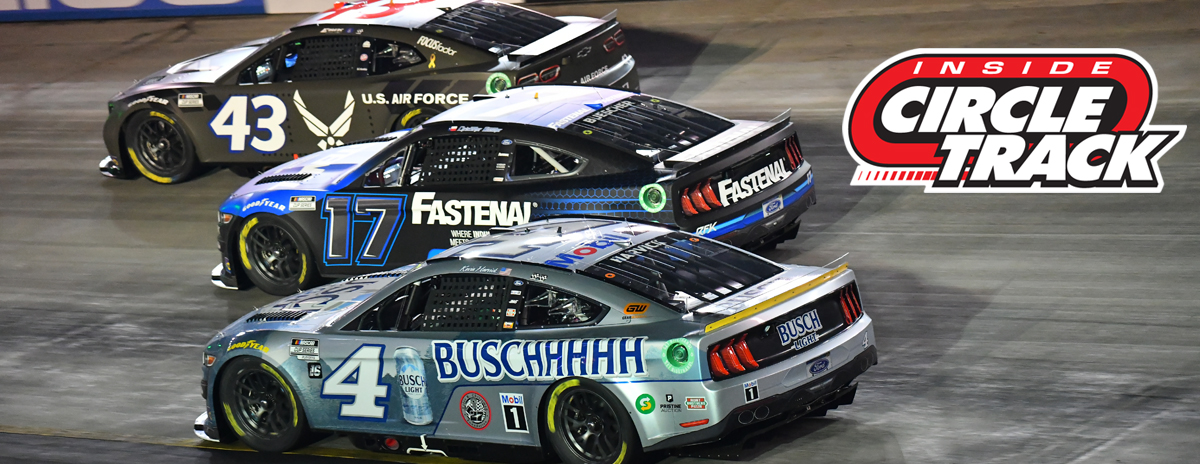
Cars spent a lot of time in a line at Martinsville
With the car previously used in the NASCAR Cup Series(Gen 6), the racing done on short tracks and road courses often proved to be the highlights of each season. Many promotional clips from Martinsville, Bristol and Watkins Glen were used by the sanctioning body, its tracks, and its television partners to hype upcoming events. However, those tracks do not seem to be as reliable at producing that kind of material now as they used to be.
While there have been some memorable moments to have happened on short tracks and road courses with the now year-old Next Gen car such as Ross Chastain’s wall ride last season at Martinsville and the three-way battle to the finish in the 2022 race held at the Circuit of the Americas, there have also been some snoozers as well.
The last two spring races at Martinsville have not exactly been the stuff of “water cooler” talk. For that matter, other short tracks have failed to produce the same thrills and spills as used to be the case. Road courses have proven to be very hit-and-miss in their offerings.
NASCAR used to always be able to fall back on those types of tracks, where aerodynamics do not play as much of a role as is the case on the much bigger speedways, for great competition and even a little fender banging when necessary. Now, it seems as if the cars cannot even get close enough to each other to bang fenders, bumpers, or anything else.
Recognizing the problem, NASCAR brought about some changes during the most recent off-season. Rear spoilers were cut to a height of two inches from the previously mandated four inches. Also, changes were made to the diffusers underneath the car as well. The hope was that these tweaks would make the car more unstable thus creating more passing opportunities. Unfortunately, that has not materialized in the first few races of the season on the tracks in which these changes have been implemented.
The race held in Phoenix was not very good while that at Richmond was slightly better in terms of entertainment value. And as mentioned before, this past weekend at Martinsville was among the worst of the season so far.
Former driver and now NASCAR on Fox commentator Clint Bowyer recently tweeted about the problem with the former Martinsville winner calling the current short track situation “unacceptable”:
1st step is owning it. Our short track program sucks. Unacceptable! Im confident they’ll find a solution.
For now, the good news is they’re in the rear view for quite some time. Really looking forward to the wild, unpredictability that IS @TALLADEGA . Who’s coming?
— Clint Bowyer (@ClintBowyer) April 17, 2023
As Bowyer stated, it will be a while before any short tracks reappear on the 2023 schedule. But the problem is that any changes dictated by NASCAR to solve the problem would likely be expensive and time consuming for the teams to implement as even the slightest adjustments require engineering and forms of testing such as wind tunnels and simulator time.
Perhaps some good news for the decision makers is that the NASCAR All-Star Race is coming soon to the newly re-opened North Wilkesboro Speedway which could serve as a testing ground in a non-points type format.
But in the opinion of this writer who has never driven or worked on a race car, the primary cause of the problem is not necessarily related to aero. My belief is that the drivers having the ability to shift gears far more often than they used to, especially at places like Martinsville and Bristol, has taken some of the skill level needed by the pilots of these machines away.
During last Sunday’s Fox broadcast, announcer Mike Joy pointed out that the brake rotors were not glowing like we have grown accustomed to seeing on the cars on that paper-clip shaped track. With drivers having the ability to downshift in order to help slow the cars down, the need for brakes has been reduced. Further, upshifting allows the cars to jump off the corners making it nearly impossible for a better handling car to get a run on the straightaways.
Now, there is not as much need to go slower at the start of a run to preserve equipment for later in the segment. That takes away some of that comers-and-goers effect that often made the short track races so interesting.
On his ‘Actions Detrimental‘ podcast, driver Denny Hamlin raised serious concerns about the Next Gen car. “We used to really talk about all the green flag passes that the Cup Series had,” Hamlin pointed out. “I haven’t heard anyone say that in the Next Gen era. Is someone hiding those stats because they used to really boast on, ‘We’ve got the most green flag passes that we’ve ever had in history.’ I ain’t heard that in a long, long time. And certainly, I’d love to see the green flag passes for the lead stat because it can’t be good.”
Whether or not there will be any changes coming to the Next Gen or to the short track package remains to be seen. This is not the time for, as NASCAR has had a history of doing in the past, shots in the dark. If this is to be the car for years to come, which would seem likely, whatever ideas are implemented need to be well thought out and tested thoroughly. What they have now is not working and has not worked on short tracks for most of its existence.
It’s time to get it right.
Please consider also reading:
If that’s how racing on wet ovals is going to be handled, then forget it
Richard Allen has been covering NASCAR and other forms of motorsports since 2008.
Respond to this piece on Twitter –> @RichardAllenIDR
or on Facebook –> InsideCircleTrack/Facebook
